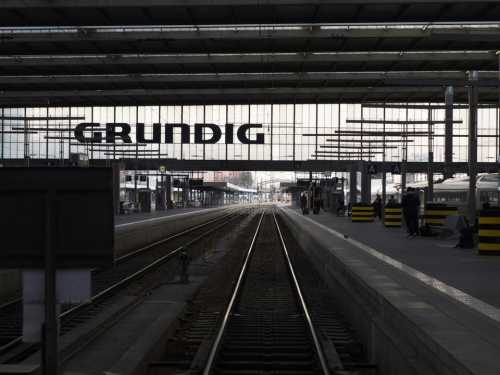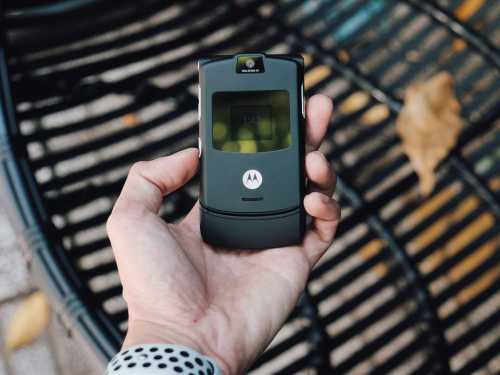
The company, which started as a small radio shop, has grown into an industrial giant in a few decades. Grundig has become a symbol of German quality in Europe and a dream for buyers here. But at the end of the 20th century, this technological giant collapsed. How did this happen and why was the legendary brand unable to maintain its leadership? Let's find out.
How Grundig was born
The story of Grundig began with a boy from a poor family who changed the world of German electronics. Max Grundig was born in 1908 in the industrial city of Fürth, in the family of a simple warehouse worker at a bicycle factory. Fate was not kind to young Max – at the age of 12 he lost his father, and his mother was left alone with four children on a meager pension.
But it was this poverty that tempered the character of the future industrialist. Becoming the eldest man in the family, Max took on the care of his mother and three sisters. During the day he studied to be a merchant, and in the evening he enthusiastically tinkered with radio components, assembling receivers – the only luxury he could afford for his loved ones. His passion for radio coincided with a revolutionary moment – in 1920, the world's first commercial radio broadcast began, and 12-year-old Max was completely fascinated by this new technology. At the age of 16, he assembled his first detector receiver.
At the age of 22, the young Grundig took a desperate step – together with his companions, he opened the Fürth, Grundig & Wurzer radio equipment store in the center of Fürth, which became the first brick in the foundation of the future Grundig empire.
Starting out by selling radio parts and repairing receivers, Grundig quickly understood the main rule of success – to be one step ahead of the competition. Within four years he had to move to a more spacious premises – his shop became the most popular radio shop in the district. And before the war, his company's annual turnover reached the impressive sum of one million Reichsmarks.
How Grundig survived the war
During World War II, the company produced transformers for the German army. Like many other industrial enterprises of the time, the factory used forced labor from prisoners of war, a significant number of whom were from the Soviet Union.
Although the use of forced labor was the norm in the war economy of the Third Reich, part of Grundig's corporate history claims that Max Grundig tried to make things easier for his workers. According to some accounts, he organized additional food and provided better conditions than in many other companies. However, the treatment of these workers remains a complex topic.
After the war, Germany lay in ruins. All the major electrical companies had been either destroyed or dismantled by the Allies. The occupying authorities, fearing a resurgence of Nazi propaganda, banned the production and sale of new radios. But where others saw disaster, Grundig saw opportunity.
At this time, Max created a set called “Heinzelmann” (“Brownie”), which was officially sold as a “do-it-yourself toy”. Technically, this was not considered radio engineering, which allowed him to circumvent the ban. In fact, with a few simple movements, this set turned into a full-fledged radio receiver. The success was phenomenal – the company produced and sold hundreds of thousands of such sets, and the profit was so great that, according to Grundig himself, they “even stopped counting the money.”
By the way, it is believed that the Grundig company was officially founded in 1945. There is a version that it was the employees, grateful for the good treatment during the war, who helped him save the equipment from confiscation by the Allies.
The real triumph came with the monetary reform of 1948. Thanks to his connections, Grundig learned about the upcoming reform 10 days before it was officially announced. This allowed him to prepare and launch his first post-war radio, the Weltklang, on the market just as every German received 40 new Deutsche Marks. The receiver cost 450 Marks – a fortune at the time, but people pooled their new money together as families to buy this symbol of new life.
In the first weekend after the monetary reform, Grundig collected thousands of new marks, which he immediately reinvested in the development of production. His strategy was simple and effective: constantly release new models, keep prices below competitors and always be the first in technical innovations. This strategy turned the small company from Fürth into one of the largest electronics manufacturers in post-war Germany.
Each new device was personally tested by Grundig – he literally felt them, checking ergonomics and quality of workmanship. If the boss didn't like something, the consequences could be the most unexpected: there is a known case when he threw a sample he didn't like out of a window from a height of 20 meters.
The company developed rapidly. By 1949, the 150,000th Heinzelmann radio had rolled off the assembly line.
The Golden Era of Grundig
By the early 1950s, Grundig had become the largest manufacturer of radio equipment in Europe. The company's product range included shortwave radios, reel-to-reel tape recorders and radios with vinyl players. The Grundig Boy pocket radio, which became a real bestseller when it was first released in 1949, was particularly successful.
The company was quick to respond to new trends. When television began to develop in Germany, Grundig introduced its first television, the Television Receiver 210. It was an affordable tabletop television with a 14-inch screen.
By 1954, two million Grundig radios were in operation worldwide. The following year, the company became the world leader in the production of tape recorders. In 1956, Grundig consolidated its leadership by becoming the largest manufacturer of tape recorders and launched its first ever portable transistor radio.
Grundig also became a pioneer in the production of voice recorders. The company's engineers developed unique solutions to reduce the size of the film and reels, creating compact devices for recording voice. In 1964, they created their own compact cassette format, DC-International. However, the project was closed two years later.
In 1964, Grundig introduced the revolutionary Satellit line of radios. This series, sold under the name Transistor for export markets, was a real breakthrough in the world of portable electronics. During the production period, 17 different models were released, each of which reflected the advanced technologies of its time. The Satellit models became especially popular, combining high reception quality, reliability and elegant design, which became the brand's calling card.
1967 was a turning point – Max Grundig took the risk of investing in the production of color TVs, when most Germans still watched in black and white. The risk paid off: when the demand for color TVs skyrocketed, the company turned out to be the only one fully prepared for the boom and captured 40% of the German market. The new T800, T1000 and T1200 Color models even had the ability to automatically turn off color when watching black and white programs.
To meet the growing demand, Grundig expanded production. In 1960, a factory opened in Northern Ireland, in 1965 in Portugal, and then a factory in Rovereto, Italy. In Nuremberg-Langwasser, a plant was built to produce plastics for television housings.
The company continued to surprise the market with new products. In 1973, the first portable color TV, the Super Color 1510, appeared, with a convenient carrying handle and available in three colors.
In 1979, Grundig introduced a revolutionary VCR with a double-sided cassette and Germany's first color projector, the Cinema 9000, with three projection tubes for creating a color image. At that time, the company employed 38,000 people at 30 locations in Germany and abroad.
Grundig's success was not limited to Western Europe. In the Soviet Union, the brand's appliances were considered elite products and were sold for Zovnishposyltorg checks, a special currency available to a few.
Working for Grundig was very prestigious. However, behind the external shine, internal problems were hidden. Max Grundig's management style became increasingly authoritarian. Each new device had to receive his personal approval. The company had a system of “consultation sheets” – notes that Grundig made about everything he didn't like, after which he called the guilty to the carpet. Resistance to his decisions was futile – even the company's chief designer was fired for daring to contradict his boss. Grundig's tough management style often led to conflicts with workers. Despite good salaries and social bonuses, employees were dissatisfied with the complete lack of voting rights.
This confrontation reached its peak when the IG Metall union organized a large-scale strike, even managing to block access to the company's premises. However, even this show of force did not force Grundig to change his position. After the union's brief victory, everything went back to normal – the company remained his personal fiefdom, where any attempt at collective influence on decision-making was resolutely stopped.
Despite the growing controversy, Grundig became a symbol of German quality and technological superiority during this period. However, behind this shine, the first cracks were already beginning to appear, which would lead to serious problems in the future. But for now, the name Grundig was synonymous with success, and Max Grundig himself was considered one of the most influential industrialists in Europe.
Facing a new reality and the beginning of the end
In the late 1970s, Grundig's situation began to change rapidly. The company's success faced a number of problems. The external threat was the aggressive expansion of Japanese companies, which offered customers high-quality equipment at significantly lower prices. However, the collapse was largely due to internal reasons: Max Grundig's authoritarian management style, his technocratic approach and high production costs in Germany did not allow the company to respond flexibly to market challenges.
The blow for Grundig was the “format war”. Grundig stubbornly promoted its Video 2000 system, developed together with Philips in 1979. However, it did not take into account the main thing – consumers were interested in the availability of content. While thousands of films were released for VHS, including popular Westerns, only a few dozen tapes were available for Video 2000.
When Grundig was informed of the competitors' advantage in the number of available films, he was genuinely surprised: “I didn't think people would watch this!” This moment perfectly illustrates how Grundig's technocratic approach, focused on technical excellence, clashed with the real needs of the market. Japanese companies had undeniable advantages: they worked for the entire global market, had lower production costs and were faster at transferring production to countries with cheaper labor. Grundig was unprepared for the new rules of the game.
In a desperate attempt to save the situation, Grundig organized a meeting in Brussels, where he proposed the creation of a European alliance of electronics manufacturers. His plan was ambitious – to achieve the recognition of the Video 2000 system as an official standard for all European countries. However, other manufacturers rejected this proposal, preferring to purchase ready-made VHS devices from Japan and sell them under their own brands. Grundig contemptuously called such companies the “Trojan horses” of the industry.
In the early 1980s, the situation became critical. In 1980, the company showed losses for the first time in its history and began to lay off employees. At the same time, Philips began to buy up more and more Grundig shares. The 75-year-old Grundig could not accept the loss of control over his brainchild. He naively believed that he would be able to continue to manage the design and development of products, while Philips would only deal with administrative issues. However, the new owner quickly dotted all the i's. After 54 years of leading the company, Max Grundig was forced to leave the building, to which he never returned. The entrepreneur died in 1989.
In 1993, Grundig AG came under the full control of the Dutch company Philips. The Dutch giant's attempts to revive the legendary brand came to nothing. Although Grundig was still innovating in the early 1990s, starting work on the 16:9 format and introducing a new Hi-Fi system in 1993, financial problems were mounting.
The purchase of Grundig turned out to be a fatal mistake for Philips. The Dutch company hoped to strengthen its position with the help of the German brand, but the plans failed: during the ownership of Grundig, Philips lost one and a half billion dollars. And already in 1997, Philips sold Grundig. Initially, the company was managed by a consortium of Bavarian companies, in 2000 it was bought out by German businessman Anton Katrine. He tried to save the brand by negotiating with potential investors, in particular with the Taiwanese Sampo and the Turkish Beko, but all attempts ended in failure.
It was not until 2007 that the Turkish conglomerate Koç Holding bought Grundig and placed the brand under its subsidiary Arçelik A.Ş., which also owns other home appliance brands (including Beko).
Today, the Grundig name can still be found on household appliances, with the brand producing televisions, washing machines, refrigerators and a host of other devices. But as those who knew the company in its heyday point out: “What is called Grundig today has nothing to do with what Max Grundig created.”






